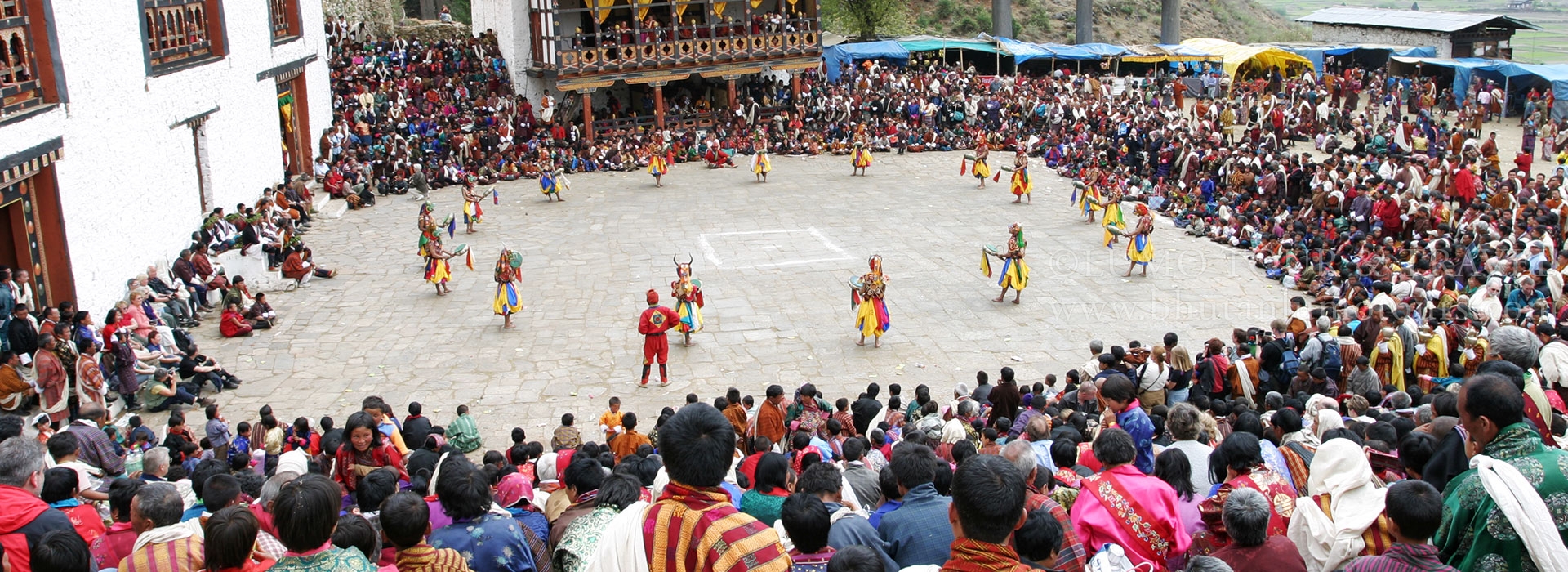The Paro Tshechu is held every spring and is one of the most colorful and significant events in Paro Dzongkhag (district).The Tsehchu is considered a major attraction and people travel from neighboring districts to participate in the festivity. The Tsechu is observed for five days. The first day is held inside the dzong (fortress) and rest of the four days are held outside the dzong. In this entire five days, the mask dances performed includes Shinje Yab Yum (Dance of the Lord of Death and his Consort), Durdag (Dance of the Lords of the Cremation Grounds), Shanag (The Black Hat Dance), Dramitse Ngacham ( Dance of the Drum from Dramitse), Degye (Dance of the Eight Kinds of Spirits), Chhoeshay (Religious Song), Shanag Nga Cham (Dance of the Black Hats with drums), Gingsum (Dance of the Three Kinds of Ging with sticks), Durdag (Dance of the Lords of the Cremation Grounds), Driging (Dance of the Three Kinds of Ging with drums), Shawa Shachi (Dance of the Stag and the Hounds), Tungam (Dance of the Terrifying Deities), Guan Drug Pawo (Dance of the Heroes with six kinds of ornaments), Pholeg Moleg (Dance of the Noblemen and Ladies), Sha Tsam (Dance of the Four Stags), Raksha Mangcham (Dance of the Judgement of the Dead), Dramitse Nga Cham (Dance of the Drums from Dramitse), Pacham (Dance of the Heroes), Dance of the Ging and Tsholing and Dance of the Sixteen Fairies.
On the last day of the celebration the monks display a gigantic thangkha (embroidered painting), the Guru Throngdel, inside the dzong. Thongdrols are especially impressive examples of Buddhist art and never fail to amaze viewers. They are considered so sacred that simply seeing a Thongdrol is said to cleanse the viewer of sin.



